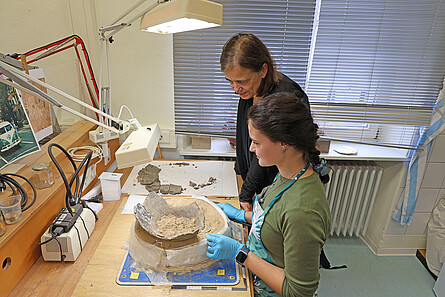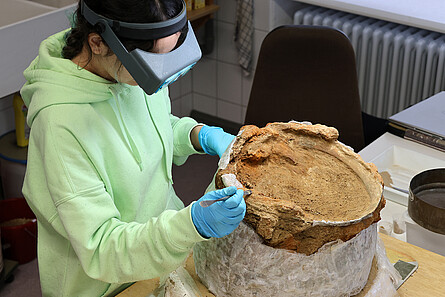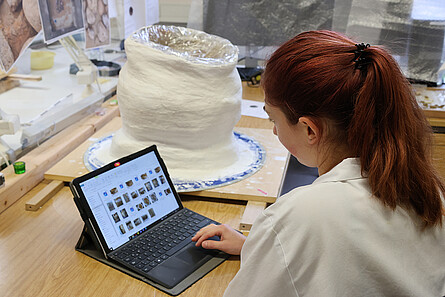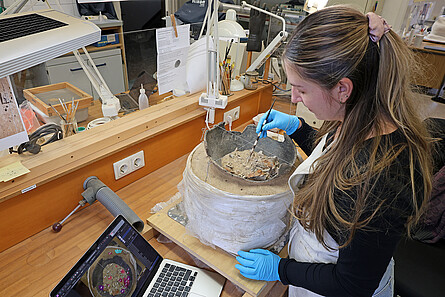



Investigations of extraordinary blocks of soil from the Nienbüttel cemetery
In August, the NIhK, in cooperation with the Chair of Prehistoric Archaeology of the University of Rostock, excavated one of the stone concentrations in the large Late Iron Age and Early Roman Iron Age urn cemetery at Nienbüttel (Uelzen district), which are unparalleled in other contemporary cemeteries in the region. Between the sometimes very large stones two bronze vessels came to light, one of which undoubtedly served as a cremation vessel and necessitates a revision of the so-called ‘cenotaphs’.
Such bronze vessels came from the Roman Empire to the Barbaricum and were integrated into local burial practices, because unlike in their context of origin, where they were part of the tableware, in cemeteries such as that of Nienbüttel they served as urns for a distinguished group of people.
Over the past three weeks, detailed examinations of these metal vessels, which had been recovered in blocks of soil, as well as two ceramic urns uncovered not far from the stone concentration, took place as part of a summer school with students from the Conservation and Restoration of Archaeological, Ethnological and Arts and Crafts Objects course at the Stuttgart State Academy of Art and Design (ABK) under the guidance of Dr. Andrea Fischer. The extremely fragile bronze vessels were first successively uncovered, documented and then consolidated with glass fibre fabric. In the case of the ceramic urns, the once carefully deposited vessel contents have already been completely uncovered and recovered. In spring 2025, the conservation and restoration measures will be continued and finally completed by two ABK students.
